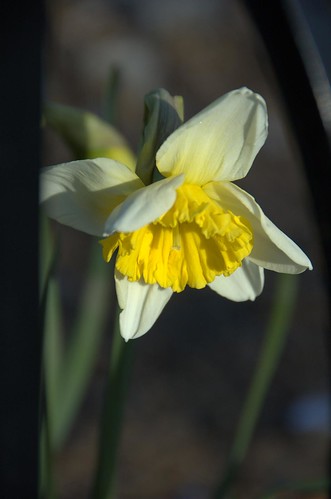This evening I came home via the Cortelyou Road stop on the Q train. I wanted to stop by John’s Bakery to pick up some munchies. I had to cross the street: the Daffodils are just starting to bloom.
They’ve started on the north side of the street, as I expected. The south side has been shaded by the stores and apartment buildings until recently. The soil in the tree pits there has not been warmed by the sun which the north, unshaded side of the street has been getting.
Last fall, two dozen volunteers planted 1,000 Daffodil bulbs and 400 Crocus corms over two weekends. The Crocus are all but spent now; just a few raggedy blooms hanging on here and there. The Daffodils are just getting started.
As in past years, there’s no way to know what you’re going to get when you plant the bulbs in the Fall. I saw at least four different kinds in bloom today.
It seems a far remove from 9/11, the inspiration for the Daffodil Project. But it was very much in the consciousness of at least some of us who planted these bulbs. And certainly in the minds and hearts of my neighbors who took the initiative to request these bulbs to be planted in their neighborhood.
Related Posts
My Flickr photo set of this project
Cortelyou Crocuses!, March 6, 2008
Cortelyou Road Crocus Watch, February 4, 2008
Tree Pits are not Dumpsters, November 18, 2007
The Daffodil Project Plantings on Cortelyou Road, November 4, 2007
1,000 Daffodils for Cortelyou Road, October 27, 2007
The Daffodil Project: Grief & Gardening #5, November 26, 2006



















































